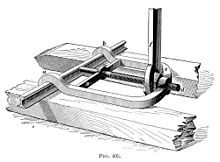
Western Australian Government Railways (WAGR) was the operator of railway services in the state of Western Australia between October 1890 and June 2003. Owned by the state government, it was renamed a number of times to reflect extra responsibility for tram and ferry operations that it assumed and later relinquished. Westrail was the trading name of WAGR from September 1975 until December 2000, when the WAGR's freight division and the Westrail name and logo were privatised. Its freight operations were privatised in December 2000 with the remaining passenger operations transferred to the Public Transport Authority in July 2003.

South Fremantle is a suburb of Perth, Western Australia, located within the City of Fremantle.
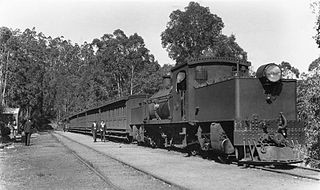
The Mundaring Weir Branch Railway was constructed from Mundaring, Western Australia to the site of the Mundaring Weir, and opened on 1 June 1898.
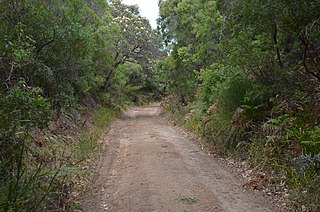
The Flinders Bay Branch Railway, also known as the Boyanup to Flinders Bay Section ran between Boyanup and Flinders Bay, in South Western Western Australia. The section from Flinders Bay to Busselton has now been converted into a rail trail for bushwalkers and cyclists, called the Wadandi Trail.

The South Western Railway, also known as the South West Main Line, is the main railway route between Perth and Bunbury in Western Australia.

The Bennett Brook Railway is a 2 ft narrow gauge tourist oriented railway operated by the West Australian Light Railway Preservation Association and is located within the boundaries of Whiteman Park, 19 kilometres (12 mi) from Perth.

Rail Heritage WA is the local trading name of the Australian Railway Historical Society Inc.

The network of railway lines in Western Australia associated with the timber and firewood industries is as old as the mainline railway system of the former Western Australian Government Railways system.
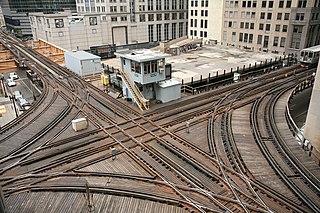
The minimum railway curve radius is the shortest allowable design radius for the centerline of railway tracks under a particular set of conditions. It has an important bearing on construction costs and operating costs and, in combination with superelevation in the case of train tracks, determines the maximum safe speed of a curve. The minimum radius of a curve is one parameter in the design of railway vehicles as well as trams; monorails and automated guideways are also subject to a minimum radius.

Witchcliffe is a small town in the South West region of Western Australia, located a few kilometres south of Margaret River on the Bussell Highway. The name originates from a cave in the area, Witchcliffe cave, that was recorded by a surveyor in 1900. It is believed the name was given by the Bussell family whose property, Wallcliffe, was established in the area in the 1850s.
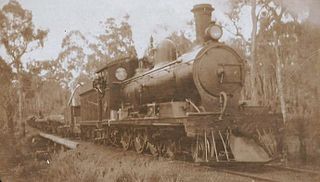
The WAGR J class was a three-member class of 4-6-0 steam locomotives operated by the Western Australian Government Railways (WAGR) between 1892 and 1924 before seeing further use with the State Saw Mills until the early 1930s.

A rail fastening system is a means of fixing rails to railroad ties or sleepers. The terms rail anchors, tie plates, chairs and track fasteners are used to refer to parts or all of a rail fastening system. The components of a rail fastening system may also be known collectively as other track material, or OTM for short. Various types of fastening have been used over the years.

Bunbury Bridge was a single-track, timber railway bridge in East Perth in Western Australia. The bridge crossed the Swan River near Claise Brook and was built for passenger and freight traffic to Bunbury on the South Western Railway.

The T class was a class of diesel locomotives built by Tulloch Limited, Rhodes for the Western Australian Government Railways between 1967 and 1970.

Track geometry is concerned with the properties and relations of points, lines, curves, and surfaces in the three-dimensional positioning of railroad track. The term is also applied to measurements used in design, construction and maintenance of track. Track geometry involves standards, speed limits and other regulations in the areas of track gauge, alignment, elevation, curvature and track surface. Standards are usually separately expressed for horizontal and vertical layouts although track geometry is three-dimensional.

The WAGR Q class was a two-member class of 4-6-0 steam locomotives operated by the Public Works Department (PWD) and later Western Australian Government Railways (WAGR) between 1928 and 1953.
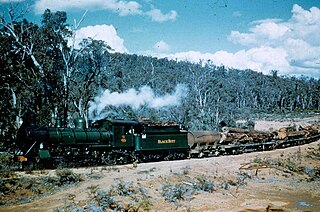
The WAGR C class was a class of light axle load steam locomotives operated by the Western Australian Government Railways (WAGR) between 1902 and 1961. A total of 22 were built in two batches.

The Nannup Branch Railway, also known as the Wonnerup to Nannup Railway, was a branch line of the Western Australian Government Railways (WAGR) between Wonnerup and Nannup.
The Westland was a magazine mainly devoted to historic railway operations in Western Australia, with items relating to current operations included. It was based in Perth.

Neil McNeil was a prominent Australian businessman who was significant in the development of railways across Australia along with Western Australia's timber industry.
